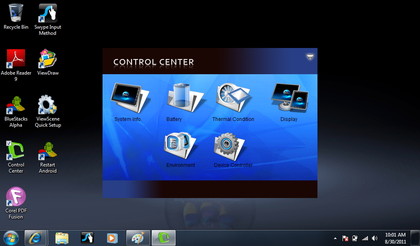Why you can trust TechRadar

Testing large tablets like the ViewSonic ViewPad 10Pro reveals that currently in the tablet market, you have to go thin and light. Toshiba's recent announcement of a much thinner Android tablet proves the theory. The ViewPad is just unwieldy for anything but casual use, mostly at a desk.
That's actually one selling point, though. The brick-like lack of mobility at least means the tablet will stay flat on a desk and won't slip around.

ViewSonic offers a small dock you can use for propping up the tablet, and you can also connect a USB hub and then a mouse and keyboard. When you use the HDMI-out port to connect the tablet to a desktop display, the ViewPad 10Pro becomes a desktop PC.
Of course, slate PCs with this functionality have been around for years. However, it's handy to run Android 2.2 in a full-screen view with a keyboard and mouse. The only other way we've done that recently is with a Motorola Atrix smartphone. But the desktop operating system, once the tablet's docked, isn't actually Android anyway.

The tablets-as-desktops approach has some advantages, but not as many as we'd hoped. For one thing, few Android apps ran correctly. We'd imagined playing Angry Birds at a desk, then switching over quickly to Word and typing up a long document, then going back to Android.
Until ViewSonic figures out the app support problem, its ViewPad 10Pro even has limited appeal in a desktop configuration.
Sign up for breaking news, reviews, opinion, top tech deals, and more.

John Brandon has covered gadgets and cars for the past 12 years having published over 12,000 articles and tested nearly 8,000 products. He's nothing if not prolific. Before starting his writing career, he led an Information Design practice at a large consumer electronics retailer in the US. His hobbies include deep sea exploration, complaining about the weather, and engineering a vast multiverse conspiracy.
